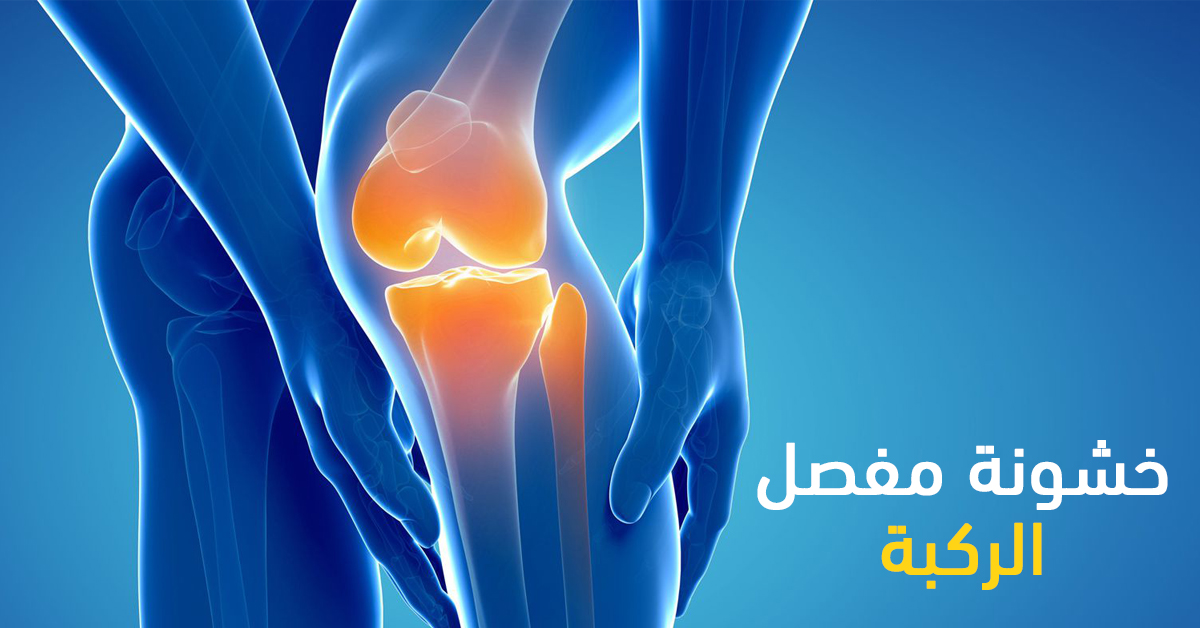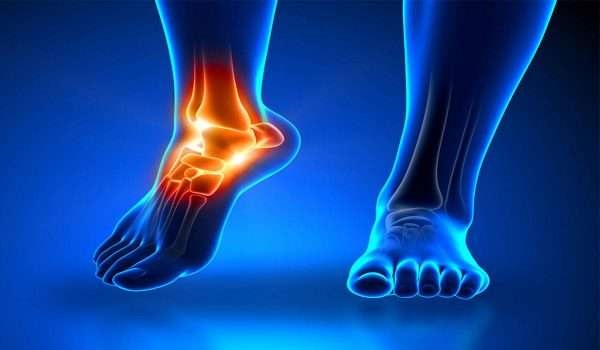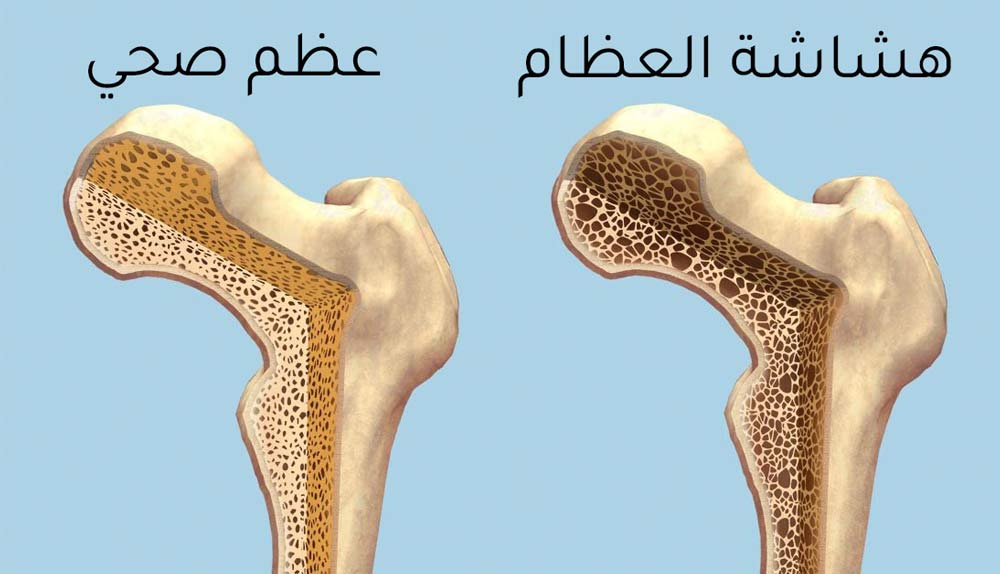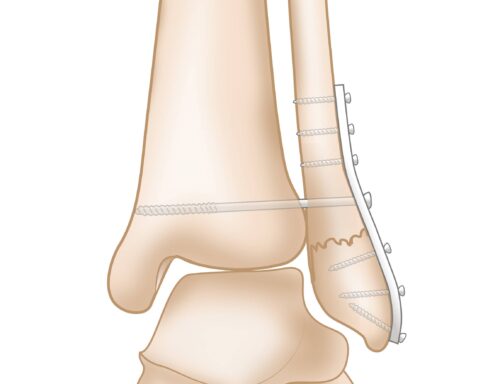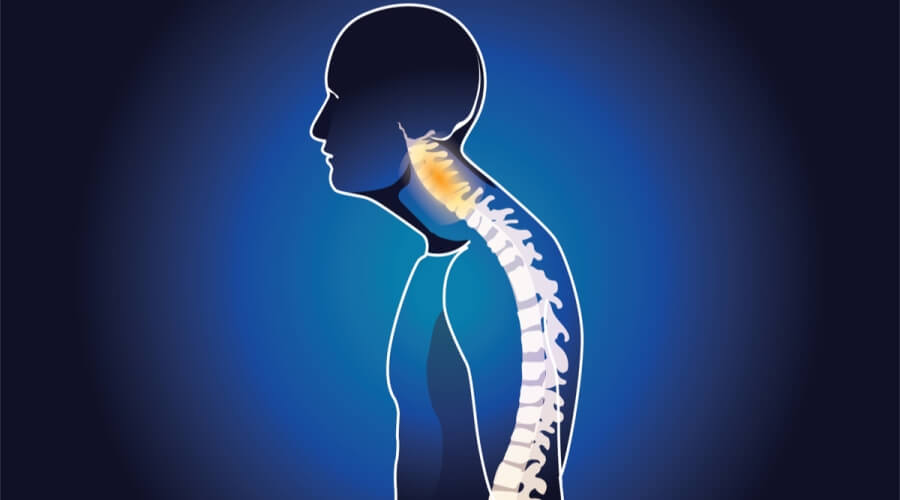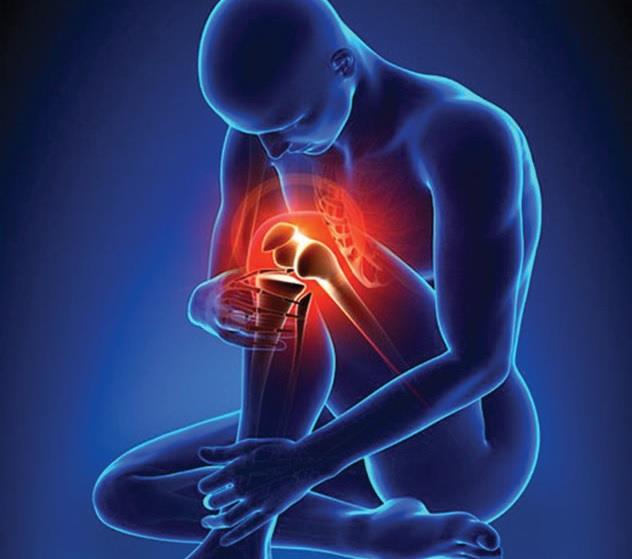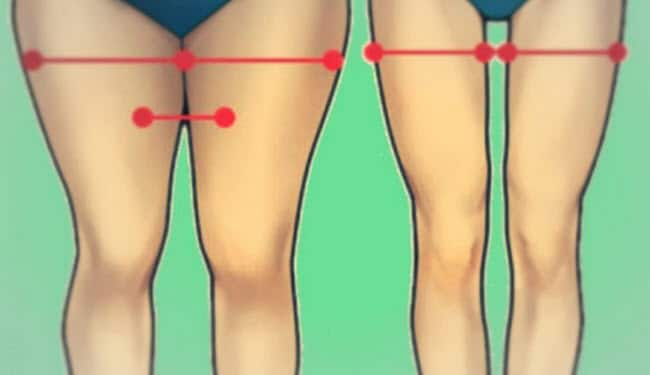What are the symptoms of sciatica? And does sciatica pain increase at night?
What are the symptoms of sciatica?
Sciatica is a health condition that causes sharp pain and numbness in the lower back and legs and is one of the most common diseases of the spine. Sciatica occurs as a result of a slipped disc between the lumbar vertebrae, leading to pressure on the sciatic nerves and their irritation.
The symptoms of sciatica generally include the following:
- Sharp pain in the lower back area: The pain begins to spread from the lower back and extends to one of the legs and down to the foot and toes. The pain can be described as pin and needle stings or an annoying ache, or sharp pains under the skin along the nerve.
- Weakness and stiffness in leg muscles: Sciatica may also be accompanied by numbness or weakness in the leg, where the sciatic nerve affected causes weakness and stiffness in the muscles that move the foot and ankle.
- Discomfort and fatigue in the lower back: Initially, one may feel discomfort and fatigue in the lower back area, which usually increases after walking or standing for a long time.
It is worth mentioning that not everyone who feels sciatica pain needs medical care. However, if the symptoms are severe or persist for more than a month, it is important for the individual to schedule an appointment with their primary care physician to assess the condition and direct them to the appropriate treatment.
Several options are available for treating sciatica, including surgical and non-surgical treatment. The type of treatment depends on the severity of the symptoms and their impact on the patient’s life. Non-surgical treatment may include lifestyle changes such as avoiding carrying heavy objects and maintaining good body posture while sitting and sleeping. In addition, medical treatments such as taking pain relief medications and physical therapy to strengthen the muscles and improve flexibility can be prescribed.
Ultimately, a person suffering from sciatica should follow the directions of the treating physician and cooperate with them to achieve the best results. It should also be remembered that the prevention of sciatica lies in maintaining a healthy lifestyle and avoiding factors that increase the risk of its occurrence, such as sitting for long periods incorrectly and lifting heavy objects improperly.
How do I get rid of sciatica pain?
Sciatica (sciatic nerve inflammation) is a painful medical condition that affects the sciatic nerve and may require comprehensive treatment to relieve pain and improve quality of life. Here are some guidelines and procedures that can help you get rid of sciatica pain:
- Consulting a doctor: Anyone suffering from sciatica pain should first consult a doctor. The doctor can provide an accurate assessment of the condition and suggest appropriate treatment.
- Physical therapy: Physical therapy can be effective in strengthening the muscles around the sciatic nerve and improving the flexibility of the back and hip. Physical therapy sessions include tailored exercises that contribute to reducing pain and improving balance.
- Exercise: Regular exercise helps improve physical fitness and relieve pain. Exercises such as walking, swimming, and light weight-bearing sports strengthen the muscles and improve body flexibility.
- Weight management: Losing weight if you are overweight can reduce pressure on the sciatic nerve and lessen pain.
- Medications: Medications such as non-steroidal anti-inflammatory drugs (NSAIDs) can be prescribed to reduce inflammation and pain. In more severe cases, doctors may prescribe pain relievers or nerve treatments.
- Radiation therapy: If other treatments do not respond, the doctor may recommend radiation therapy (physiotherapy with radiation) to reduce pain and improve the condition.
- Surgery:
Surgery is a rare option and is preferred in severe cases of sciatica or when there is a significant constriction of the sciatic nerve. The type of surgery is determined based on the individual case assessment.
- Stress Relief Techniques:
Stress relief techniques such as yoga and meditation can help reduce stress and improve the body’s response to pain.
- Adopting a Healthy Lifestyle:
This includes good sleep, balanced nutrition, abstaining from smoking, and avoiding sitting for long periods.
- Back and Hip Care: Avoid sitting for long periods, poor standing postures, and lift heavy objects correctly.
Sciatica (sciatic nerve inflammation) is a medical condition that can be well controlled and managed with medical consultation and a healthy lifestyle. Remember that treatment depends on the individual case and medical assessment, and it is essential to follow the doctor’s guidance to achieve the best results.
Can sciatica heal on its own?
Sciatica, also known as sciatic nerve inflammation, is a medical condition that causes sharp pain radiating from the back area through the hip and down the leg. This common and troubling condition leads many to wonder if it can heal spontaneously without treatment. In this article, we discuss the possibility of spontaneous healing of sciatica and when to seek treatment.
Causes and Nature of Sciatica:
Sciatica occurs as a result of pressure or irritation of the sciatic nerve and can be caused by several reasons, including a herniated disc in the spine, back muscle tears, vertebral disc slips, or arthritis. Weight gain, injuries, and other factors can increase the risk of developing sciatica.
Can It Heal Spontaneously?
Although some cases of sciatica may improve gradually without the need for intensive treatment, it is very rare for the condition to heal spontaneously completely. Spontaneous improvement depends on the primary cause of sciatica and the extent of its impact on the sciatic nerve and surrounding tissues.
Sciatica Treatment:
Treating sciatica usually requires medical intervention or physical therapy to alleviate pain and improve the condition. Among the common treatments:
Physical Therapy: Physical therapy can offer specialized exercises to strengthen muscles and improve flexibility in the back and hip. Medication: Medications include non-steroidal anti-inflammatory drugs and analgesics to reduce pain and inflammation. Surgery: In severe cases of sciatica or when the patient does not respond to other treatments, surgery can be considered to relieve pressure on the sciatic nerve.
Although some cases of sciatica may show gradual improvement without the need for specific treatment, it is always advisable to consult a doctor and seek treatment when sciatic nerve pain becomes bothersome and persistent. Treatment methods depend on the characteristics and severity of the condition, and early treatment can help reduce sciatica complications and improve quality of life.
Which doctor should be consulted for sciatica?
When it comes to sciatica or inflammation of the sciatic nerve, clinical assessment by qualified doctors is the first and most important step in identifying and diagnosing the condition. Dr. Amr Amal, as with other specialist doctors, plays a crucial role in providing care and accurate diagnosis for patients suffering from sciatica. In this article, we will discuss how Dr. Amr Amal and other physicians can effectively diagnose and deal with sciatica.
Medical History and Clinical Assessment:
Dr. Amr Amal, along with neurologists, surgeons, and general practitioners, begins the assessment process by listening to a detailed medical history from the patient. This assessment includes inquiring about the patient’s accompanying symptoms, their severity, and their impact on daily life.
Physical Examination:
The doctor conducts a thorough physical examination based on their clinical knowledge and experience. This examination includes checking the patient’s movement and assessing the affected muscles and nerves. The examination may also include a spinal check to determine if there are any narrowing factors or spinal slips that could lead to sciatica.
Diagnostic Tests:
In some cases, diagnostic tests may be necessary to confirm the diagnosis. Among these tests are:
X-rays: X-rays can show changes in the skeletal structure of the spine and reveal the presence of any abnormalities or disc herniations. Magnetic Resonance Imaging (MRI): MRI can reveal detailed images of the spine and surrounding tissues, aiding in the accurate identification of the pain source. Computerized Tomography (CT Scan): A CT Scan can be used to better determine the details of the spinal structure and potential deformities.
Treatment and Management:
Based on clinical assessment and test results, Dr. Amr Amal and the healthcare team will present the patient with available options for treating and managing sciatica. These options include physical therapy, anti-inflammatory medications, rehabilitative treatments, and in some cases, surgery.
Dr. Amr Amal and other specialists play a vital role in providing healthcare to patients suffering from sciatica. With clinical assessment, accurate diagnosis, and expertise in delivering appropriate treatments, doctors can help patients manage this condition and improve their quality of life.
Where does sciatica come from?
Sciatica, also known as inflammation of the sciatic nerve or twisted sciatic nerve, is a painful medical condition that affects the sciatic nerve and can cause sharp pain extending from the back area to the hip and leg. Sciatica results from irritation or pressure on the sciatic nerve, and the causes of this irritation can be multiple and varied. Let’s explore the sources and potential causes of this condition:
- Disc Herniation:
One of the common causes of sciatica is a disc herniation, where the vertebral disc, which acts as a cushion between the vertebrae, slips out of place. When a disc herniation occurs, it can put pressure on the sciatic nerve, causing pain and irritation.
- Disc Displacement:
Disc displacement is a condition that occurs when the fibrous disc in the spine slips out of place. This displacement can be another cause for irritation of the sciatic nerve and sciatica pain.
- Muscle Tear:
A muscle tear in the back or hip area can lead to irritation of the sciatic nerve. This tear can result from overexertion, a sports injury, or a car accident.
- Arthritis:
Some types of arthritis, such as rheumatoid arthritis or degenerative arthritis, can cause irritation to the sciatic nerve.
- Vertebral Slippage:
Vertebral slippage is a condition that occurs when one of the vertebrae moves out of its normal position. This slippage can cause sciatica if it exerts pressure on the sciatic nerve.
- Spinal Stenosis:
Spinal stenosis can also compress the sciatic nerve and cause pain similar to sciatica symptoms.
- Injury:
Direct injuries to the back or hip can cause damage to tissues and irritation to the sciatic nerve.
- Weight Gain:
Excessive weight gain puts additional pressure on the spine and the sciatic nerve, increasing the likelihood of irritation.
- Aging:
As we age, the spine becomes less flexible, increasing the probability of experiencing sciatica.
Although these causes point to how sciatica may occur, it is always necessary to consult a doctor to provide a clinical assessment and accurate diagnosis to determine the exact cause and appropriate treatment options. Prevention of injuries, maintaining physical fitness, and an ideal weight play an important role in reducing the likelihood of developing sciatica.
Does sciatica pain increase at night?
Sciatica, or inflammation of the sciatic nerve, is a medical condition that affects the sciatic nerve and causes sharp pain that extends from the back area to the hip and leg. Many people suffer from this condition, and some have noticed an increase in pain intensity or worsening at night. Let’s look at the possible reasons and how to deal with this situation.
- Pressure on the sciatic nerve during sleep:
One of the main reasons that may lead to increased pain at night is the pressure on the sciatic nerve during sleep. When the body is in a certain position during sleep, additional pressure can be applied to the sciatic nerve, which increases irritation and accompanying pain.
- Muscle tension:
The pain may be accompanied by muscle tension resulting from sleeping in uncomfortable positions. The muscles try to compensate for unsuitable positions, which can increase pain during the night.
- Decreased movement rate:
At night, the movement rate is generally lower, meaning the body may remain in a fixed position for long periods. This can cause fluid accumulation in the sciatic nerve area and increased pain.
- Accumulation of inflammations:
The severity of pain can increase at night due to the accumulation of inflammations in the sciatic nerve area during the day as a result of activities and movement. This accumulation can worsen at night.
- Lack of sleep and relaxation:
Lack of sleep and relaxation can increase pain during the night, as the body is in a state of readiness and tends to create muscle tension.
How to deal with increased pain at night?
It may be difficult to completely avoid increased pain at night, but there are some steps that can help alleviate it: Use supportive pillows: A pillow under the knees during sleep can help maintain a proper spine position and reduce pressure on the sciatic nerve. Massage and relaxation exercises: Gentle massage techniques and practicing relaxation exercises can help reduce muscle tension and improve sleep quality. Physical therapy: Physical therapy can offer strengthening and stretching exercises for muscles and tissues surrounding the sciatic nerve area. Consult a doctor: In case of persistent increase in pain at night or worsening, it is necessary to consult a doctor to provide appropriate treatment and rule out any other potential problems.
Note that it is important to deal with increased pain at night cautiously and in cooperation with a doctor, as there may be cases that require special care and tailored treatment.
Does Sciatica Appear on Imaging?
Sciatica, also known as sciatic nerve inflammation, is a medical condition that affects the sciatic nerve and causes sharp pain in the back, hip, and leg area. Imaging is one of the diagnostic tools that can be used to provide a clearer picture of the condition and to identify the source of the pain. But can sciatica actually be seen on imaging? Let’s find out.
How does imaging work?
Before discussing whether sciatica can be seen on imaging, let’s understand how these imaging techniques work. X-rays, Computed Tomography (CT Scans), and Magnetic Resonance Imaging (MRI) are types of imaging that can be used for medical diagnosis.
X-ray: X-rays produce two-dimensional images of the skeletal structure and are commonly used to detect bone abnormalities such as fractures or dislocations. CT Scan: CT Scans use X-ray technology to create three-dimensional cross-sectional images of the internal structure, which helps pinpoint the location of diseases and abnormalities with greater precision. MRI: Magnetic Resonance Imaging uses magnetic fields and radio signals to produce detailed images of soft tissues such as nerves, blood vessels, and non-bony structures.
Can sciatica be seen on imaging?
Sciatica results from irritation or compression of the sciatic nerve, a long nerve that extends from the back to the leg. In the case of X-rays and CT Scans, they may reveal changes in the bone structure like a herniated disc or spinal stenosis, but they do not directly show the nerve irritation itself.
On the other hand, MRI is the most precise diagnostic tool for viewing nerve irritation and determining the cause of pain in sciatica. MRI can show the fine details of the nerves and the soft tissues surrounding the sciatic nerve, allowing the doctor to make an accurate assessment of the condition and to determine the severity of the irritation.
In summary, X-rays and CT Scans do not directly show nerve irritation in cases of sciatica, while MRI can provide accurate images of the soft tissues and nerves to identify the source of the pain. Therefore, if there are suspicions of sciatica as a possible condition, MRI may be the optimal choice for diagnosis. One should always consult a doctor to obtain an accurate clinical assessment and appropriate guidance.
Can Sciatica Occur in Both Legs?
Sciatica, also known as sciatic nerve inflammation, is a medical condition that affects the sciatic nerve and causes sharp pain in the back, hip, and leg areas. This condition is common and usually affects one leg. But can sciatica occur in both legs at the same time? Let’s explore this.
What is Sciatica?
Before looking into the possibility of sciatica occurring in both legs together, let’s gain a better understanding of this condition. Sciatica arises when the sciatic nerve is pressured or irritated, leading to sharp pain that includes the back, hip, and leg. The sciatic nerve is a long nerve that extends from the spinal column down to the leg and is composed of a group of smaller nerves that control movement and sensation in the leg and foot.
Can Sciatica Occur in Both Legs Together?
Generally, sciatica is limited to one leg due to specific pressure or irritation on the sciatic nerve on one side of the body. Naturally, sciatica does not occur in both legs together.
However, there can be rare exceptional cases where symptoms similar to sciatica appear in both legs. This can result from issues in the spine or certain problems with the nerves that supply both legs. For instance, compression or irritation of nerve roots near the spinal column can lead to pain appearing in both legs.
Overall, sciatica is a condition that typically affects one leg and rarely occurs in both legs together. If you are experiencing pain in both legs, there could be various other causes that require evaluation and diagnosis by a doctor. Medical consultation is always the first step to understanding the pain and determining appropriate treatment if necessary.
The Correct Way to Sleep for Those Suffering from Sciatica
Sciatica, also known as sciatic nerve inflammation, is a painful condition that affects the sciatic nerve, causing sharp pains that spread from the back and hip area down to the leg. If you suffer from sciatica, you may find that the pain worsens or becomes more intense at night when sleeping. However, there are some guidelines on how to sleep correctly to alleviate the pain and improve your comfort during the night.
- The Right Choice of Mattress and Pillows:
The right mattress may be key to comfortable sleep. Choose a mattress that provides necessary back support and helps maintain a proper body posture. A mattress suitable for the back and legs is preferable. Use a pillow under your head to support the cervical spine and another pillow under your knees to help slightly elevate the knees. This position can relieve pressure on the sciatic nerve.
- Avoid Harmful Positions:
Avoid sleeping on your stomach as this position can increase pressure on the back and sciatic nerve. The better position is to sleep on your back or side with the knees slightly bent.
- Massage and Relaxation Exercises:
Before sleeping, gently massaging the painful area can be beneficial. You can also practice relaxation exercises such as deep breathing and muscle stretching to relieve tension.
- Localized Heat:
Applying a local heat source such as a hot water bottle or a heating pad to the painful area before sleeping can help alleviate pain and increase relaxation.
- Weight Management:
If you are overweight, losing the extra weight may reduce pressure on the sciatic nerve and relieve pain.
- Consult a Doctor:
If the pain persists or worsens significantly at night, you should consult a doctor. The doctor may suggest specific treatments or other techniques to effectively deal with sciatica.
- Adherence to Treatment:
If you have been diagnosed with sciatica and treatment has been prescribed, you should adhere to the doctor’s treatment instructions and follow the treatment plan accurately.
In conclusion, sciatica should be managed carefully according to the doctor’s guidelines. Changing sleep habits and paying attention to body posture can have a significant impact on pain relief and improving sleep quality.
Proper Sleeping Methods for Those Suffering from Sciatica?
Sciatica, also known as inflammation of the sciatic nerve, is a painful condition that affects the sciatic nerve, causing sharp pains that spread from the back and hip area to the leg. If you suffer from sciatica, you may find that the pain worsens or becomes more intense at night while sleeping. However, there are some guidelines on how to sleep properly to alleviate pain and improve your comfort during the night.
- The Right Choice of Mattress and Pillows:
The right mattress can be key to comfortable sleep. Choose a mattress that provides the necessary support for your back and helps maintain proper body posture. It is preferable to use a mattress suitable for the back and legs. Use a pillow under the head to support the cervical spine and another pillow under the knees to help raise the knees slightly. This position can relieve pressure on the sciatic nerve.
- Avoid Harmful Postures:
Avoid sleeping on your stomach, as this position can increase pressure on the back and sciatic nerve. The best position is to sleep on your back or side with the knees slightly bent.
- Massage and Relaxation Exercises:
Before going to bed, gently massaging the painful area can be beneficial. You can also perform relaxation exercises such as deep breathing and muscle stretching to relieve tension.
- Localized Heat:
A local heat source such as a hot water bottle or a heating pad can be used on the painful area before sleep to alleviate pain and increase relaxation.
- Weight Management:
If you are overweight, losing the excess weight may reduce the pressure on the sciatic nerve and alleviate the pain.
- Consult a Doctor:
If the pain persists or worsens significantly at night, you should consult a doctor. The doctor may suggest specific treatments or other techniques to deal with sciatica effectively.
- Adherence to Treatment:
If you have been diagnosed with sciatica and a treatment has been prescribed, you should adhere to the doctor’s treatment instructions and follow the treatment plan accurately.
In conclusion, sciatica should be handled carefully according to the doctor’s instructions. Changing sleeping habits and paying attention to body posture can have a significant impact on pain relief and improving sleep quality.
Sciatica’s Impact on the Knee
Generally, sciatica is associated with pain and symptoms in the hip, leg, and foot area, not necessarily the knee. However, there are factors that may allow sciatica to affect the knee:
- Effect on Body Posture: In some cases, severe pain from sciatica can lead to changes in body posture and walking style. This shift in posture can put extra pressure on the knee and lead to pain in this area.
- Muscle and Tendon Tension: The pain and inflammation resulting from sciatica can cause tension in the muscles and tendons around the knee. This tension can lead to knee pain.
- Overall Impact on Movement: In some instances, the difficulty in movement due to sciatica pain can lead to increased pressure on the knee during motion, thus exacerbating the pain.
How to Manage Knee Pain Resulting from Sciatica?
- Consult a Doctor: If you are experiencing knee pain or suspect issues in this area as a result of sciatica, you should consult a doctor for evaluation and accurate diagnosis.
- Medical Treatment: Medical treatments such as physical therapy or pain-relieving medications may be helpful in alleviating pain and increasing knee flexibility.
- Exercise and Physical Therapy: Simple exercises and physical therapy sessions can help strengthen the muscles around the knee and improve movement.
- Rest and Relaxation: Resting and reducing pressure on the knee can be beneficial in improving the pain.
Sciatica can cause pain and symptoms in the hip and leg area and may indirectly affect the knee through changes in body posture and tension in the muscles and tendons around the knee. Therefore, if you are experiencing knee pain and suspect it is related to sciatica, you should consult a doctor for appropriate evaluation and treatment.
Is the Sciatica Procedure Dangerous?
The sciatica procedure itself is not considered dangerous, but the condition that leads to sciatica can be painful and have a significant impact on the quality of life of those affected by it. Sciatica results from compression or irritation of the sciatic nerve and can cause acute pain, numbness, and weakness in the affected leg.
The danger depends on several factors, including the severity of the pain, the extent of its impact on the individual’s life, and how well the person responds to treatment. In many cases, sciatica can be successfully treated with non-surgical therapeutic measures such as physical therapy, medication, and pain relief treatments. In more complex cases or when non-surgical treatment is not effective, a surgeon may suggest surgery to relieve pressure on the sciatic nerve.
Individuals who experience symptoms of sciatica should consult with a doctor to obtain an accurate assessment and determine the appropriate treatment options based on their individual condition. Proper treatment and medical follow-up can help improve symptoms and reduce their impact on daily life.
How does cupping treat sciatica?
Cupping is a medical technique that dates back to ancient times, where it was used in various cultures to treat a range of diseases and health conditions. This technique involves placing glass or plastic cups on the skin’s surface and creating suction to draw blood to the surface. Some individuals and traditional practitioners believe that cupping can be effective in treating a variety of health conditions, including sciatica. Is there any scientific basis for using cupping as a treatment for sciatica? And is it truly effective? Let’s explore this topic in more detail.
Understanding Sciatica:
To understand how cupping might work to treat sciatica, we first need to recognize the nature of this condition. Sciatica is a condition that occurs as a result of irritation or pressure on the sciatic nerve, which extends from the back area to the leg and foot. This irritation can cause sharp pain, numbness, and weakness in the affected leg. Nerve inflammations, fluid accumulations, and blood vessel inflammations cause pressure on the nerve and the surrounding tissues.
How a Cupping Session is Conducted?
A cupping session includes the following steps:
- Skin Preparation: The targeted skin is carefully cleaned and sterilized.
- Placing the Cups: The cups (either glass or plastic) are placed on the targeted skin.
- Creating Suction: Suction is created inside the cups to pull air and blood towards the surface.
- Leaving the Cups: The cups are left on the skin for a specific duration, which can range from several minutes to several tens of minutes.
- Removing the Cups: After the session is completed, the cups are removed, and the area is sterilized.
Is cupping effective for treating sciatica?
Despite a long history of cupping use in traditional therapies, there is limited scientific research regarding its effectiveness in treating sciatica. There is no conclusive scientific confirmation to date proving that cupping effectively treats sciatica.
Nevertheless, some practitioners believe that cupping can increase blood flow to affected areas and reduce inflammation, thereby alleviating the pain associated with sciatica. However, these effects have not been scientifically proven definitively.
Safety Considerations and Risks:
- Cupping sessions should be performed by a trained and licensed professional.
- There are risks of infection or tissue damage if sterilization is not done properly.
- Cupping should be avoided if you have blood clotting problems, skin wounds, or other health issues.
Despite the use of cupping technique in treating many conditions, there is a need for further research and studies to more accurately determine its effectiveness as a treatment for sciatica. It is always advisable to consult a doctor and seek recognized medical treatments for sciatica and similar diseases.



